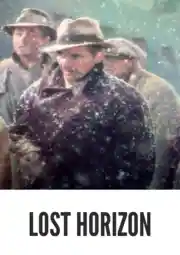Contact: [email protected]
Video Sources 0 Views

Synopsis
[ez-toc]




Introduction
In the vast tapestry of cinematic history, certain films stand as timeless masterpieces, their impact enduring through the decades. Among these gems is “Lost Horizon Colorized” a 1937 classic directed by the legendary Frank Capra. Known for its captivating narrative and iconic black and white cinematography, this film has recently undergone a transformative process – colorization. In this article, we will delve into the fascinating history of “Lost Horizon,” explore the intricacies of its colorization, and evaluate the impact this change has on the timeless tale of Shangri-La.
Read Media File Transfer Agreement: Terms and Conditions
Read FAQ
The Fascinating History of Lost Horizon Colorized
“Lost Horizon Colorized,” based on James Hilton’s novel, takes audiences on a journey to the mystical and harmonious Shangri-La. Directed by Frank Capra, the film boasts an ensemble cast that includes Ronald Colman, Jane Wyatt, John Howard, Thomas Mitchell, and Edward Everett Horton. Their collective talents contributed to the film’s critical acclaim. The black and white cinematography of the 1937 version has become synonymous with the film’s mysterious and dreamlike atmosphere, etching itself into the annals of cinema history.
Shangri-La, the secluded utopia where time stands still, became a central element in the story, capturing the imagination of audiences. The original film’s monochrome presentation added a layer of enigma to the mythical realm, leaving viewers to interpret Shangri-La through their own subjective lens.
The Process of Colorizing Lost Horizon Colorized
The decision to colorize an old film like “Lost Horizon Colorized” is not without its challenges. The process involves meticulous attention to detail, utilizing advanced technology to breathe new life into classic footage. Colorization seeks to bridge the gap between past and present, providing modern audiences with a fresh perspective on beloved films.
The colorization of “Lost Horizon Colorized” required a blend of artistic expertise and technological advancements. Digital restoration played a crucial role in preserving the film’s original quality while introducing a vibrant spectrum of colors. The delicate balance between honoring the filmmaker’s vision and embracing contemporary aesthetics posed a unique challenge for the colorization team.
Examining the Impact: Color vs. Black and White
The debate surrounding the colorization of classic black and white films has raged on for years. Some argue that the original monochrome presentation preserves the artistic integrity of the filmmaker’s vision, while others contend that colorization provides a more immersive and relatable viewing experience for contemporary audiences.
“Lost Horizon Colorized” in color offers a visual feast, allowing viewers to witness the lush landscapes of Shangri-La in vibrant hues. The interplay between color and light enhances the emotional depth of the narrative, bringing the characters and their surroundings to life in ways previously unexplored.
Yet, the allure of black and white cinema lies in its ability to evoke a sense of nostalgia and timelessness. The stark contrasts and shadows create a visual poetry that has captivated audiences for generations. The impact of colorization on “Lost Horizon Colorized” raises questions about the delicate balance between preserving the authenticity of the past and adapting to the expectations of modern viewers.
The Significance of Lost Horizon Colorized 1937
The colorized version of “Lost Horizon” has not gone unnoticed in the world of cinema. The film’s recognition includes prestigious accolades such as the Academy Award for Best Art Direction. This acknowledgment not only reflects the technical prowess of the colorization team but also emphasizes the enduring appeal of “Lost Horizon v” in its rejuvenated form.
For Frank Capra, the colorized rendition of his 1937 classic marks a moment of recognition, signaling the enduring impact of his directorial vision. The Academy Award serves as a testament to the film’s ability to transcend its original era and capture the hearts of a contemporary audience.
Rediscovering Shangri-La: Visual Representation in Color
Exploring the colorized version of “Lost Horizon Colorized” offers a unique opportunity to rediscover the visual representation of Shangri-La. The mythical paradise takes on a new dimension as color breathes life into its landscapes and inhabitants. The vibrancy of the surroundings enhances the utopian allure, making Shangri-La even more enchanting than before.
The colorization process allows audiences to experience the nuances of the setting in ways that were previously left to the imagination. From the majestic mountains to the tranquil waters, every aspect of Shangri-La becomes a canvas for the colorist’s palette. This visual reimagining not only adds a layer of richness to the film but also invites viewers to immerse themselves fully in the magic of this cinematic world.
Preservation and Controversy: The Legacy of Lost Horizon Colorized 1937
The role of colorized versions in preserving the relevance of old movies for modern audiences has been a subject of much discussion. “Lost Horizon” in its colorized form raises questions about the balance between preserving the artistic intent of the original work and adapting it for contemporary viewers.
While colorization opens the door for a new generation to appreciate classic films, it also sparks controversy. Purists argue that altering the visual aesthetic compromises the integrity of the original work. The debate surrounding the colorization of “Lost Horizon” reflects a broader discourse in the film community regarding the preservation of cinematic heritage and the need to cater to evolving audience preferences.
Final Thoughts
As we revisit “Lost Horizon” in its colorized form, the performances of the cast, including Ronald Colman, Jane Wyatt, John Howard, Thomas Mitchell, and Edward Everett Horton, come to the forefront. Their portrayals continue to resonate with audiences, bridging the gap between eras and showcasing the timeless appeal of the film.
In conclusion, the colorized version of “Lost Horizon” offers a fresh perspective on a cinematic masterpiece. The process of colorization, while sparking debates, has undoubtedly breathed new life into this classic. As we navigate the delicate balance between preserving the past and adapting to the present, “Lost Horizon” stands as a testament to the enduring power of storytelling and the evolving nature of cinematic art.















